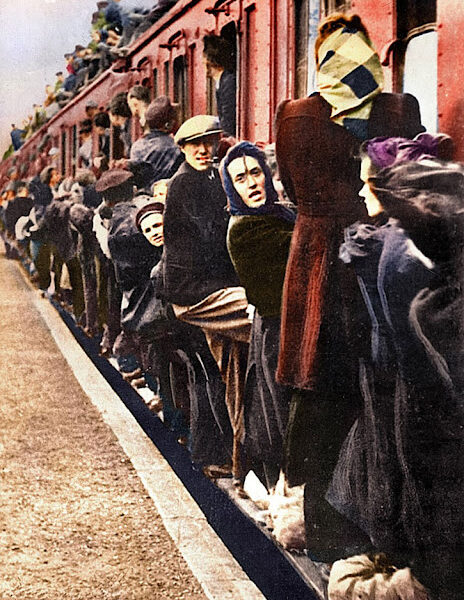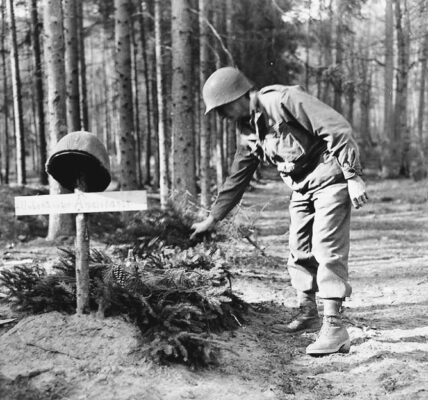The conflict forced millions of Europeans to flee persecution, fighting, and poverty. The displacement began even before the war, when the first signs of Nazi aggression compelled German residents and their neighbors—especially Jews—to seek safety elsewhere. Migration continued throughout the war, as families left burned-out cities, children were sent to safer areas, and the scale of Nazi crimes increased. Even after the return of peace, there was an influx of refugees, with released prisoners as well as citizens of the occupied Axis powers wandering the continent.
In total, according to some estimates, approximately 60 million Europeans became refugees during the entire Second World War. According to the United Nations, by 1951, more than five years after the end of the fighting, one million people still hadn’t found a place to settle. The desperation and urgency of Europe’s current humanitarian emergency have been powerfully conveyed through photography, and this was no less true during World War II. These are just a few images that help convey the impact and magnitude of the postwar refugee crisis.

|
| Betti Malek—pictured here on May 17, 1945—was one of numerous refugee children brought to England from Belgium after the German occupation of Antwerp in 1940. (AP Photo) |

|
| German refugees and displaced persons cram every inch of a train leaving Berlin after the end of the war. 1945. (Margaret Bourke-White—The LIFE Images Collection/Getty Images) |
 |
| Refugees from across Central Europe line up for food at an Allied refugee camp in Germany on March 20, 1945. (Allan Jackson/Keystone—Getty Images) |
 |
| A group of Dutch refugee children arrive at Coventry Station in Great Britain in 1945. (Ian Smith – The LIFE Picture Collection/Getty Images) |
 |
| German refugees crowd the market square in Jüchen, a town captured by the U.S. Army at the end of World War II, on March 3, 1945. (Fred Ramage/Keystone—Getty Images) |
 |
| Exhausted, homeless German refugees huddled in a municipal building, seeking shelter. 1945. (Leonard McCombe—The LIFE Images Collection/Getty Images) |
 |
| Refugees from East Germany around 1944-1945. (Berlin Verlag/Archive/picture-alliance/dpa—AP Photo) |
 |
| German civilian refugees prepare to flee war-torn Aachen as the battle for the doomed city draws to a close (October 24, 1944). (Keystone—AP Photo) |
 |
| Women and children stand on the side of the road in 1945. (dpa/picture-alliance/dpa—AP Photo) |

|
| German civilian refugees march through the streets of Aachen on October 15, 1944, on their way to a safer area away from the combat zone. (FPG/Hulton Archive—Getty Images) |
 |
| A civil affairs refugee camp in France, 1944. (Ralph Morse – The LIFE Picture Collection/Getty Images) |

|
| War refugees march through Berlin with their belongings on December 15, 1945. (dpa DANA/picture-alliance/dpa—AP Photo) |
 |
| A guard with a white armband (front, right) escorts newly arrived refugees through the refugee camp in Bebra in January 1946. (dpa/picture-alliance/dpa—AP Photo) |












